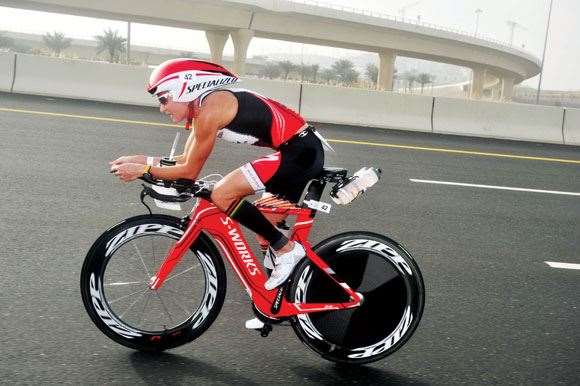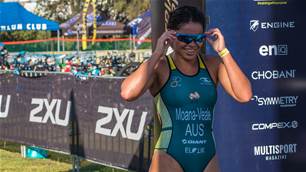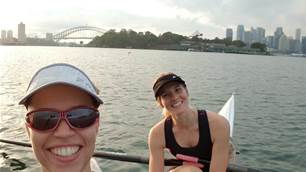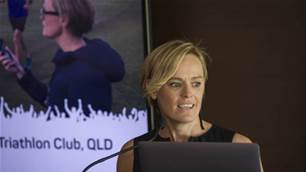Melissa Rollison has switched her name and her sport – and in astonishingly short order transformed into the current World 70.3 Triathlon champion.
 Photos by, Timothy Carlson
Photos by, Timothy Carlson“He kept trying to persuade me. He said, ‘But you can ride and run – you can always do long course.’ Eventually I did a duathlon and I won that, and then he’s like, ‘Come on, just try the swimming.’ So he took me down to the local pool, where he knew the tri coach. I started swimming there and thought, ‘Yeah, it’s not too bad.’ But I was no good at it. I’m still not great. That’s what I’ve really got
to work on. I think after this year I’m going to go home and find someone who can help me with stroke and everything. At the moment I just jump in with the squad and go as hard as I can, and the only reason I get anywhere is because I’m fit and I’ve got the determination. But my technique is terrible. I’m sure if I can get that figured out, I’ll go a lot quicker.
“I’ve never had any formal swimming training. I remember in primary school when we had swimming lessons, I used to get Mum to write me a note to get me out of it. I go back to Mum now and ask, ‘Why did you write that note!’ I’ve always loved the beach, but just not swimming.
“In my first couple of races, I was coming out of the swim dead-last by four or five minutes. And then I had to ride and run them down. I’ve definitely improved: I’m starting to come out about mid-pack now – but it’s still hard starting behind every time.
“At the World Championships last year, when I came out of the water I was still three minutes behind the leaders. The good thing is that, unlike Olympic distance triathlon, drafting isn’t allowed, so we all have to ride as hard as we can. If I get off the bike second or third, I can usually leave it to the run and catch most of them. But I get frustrated that I can’t swim well.
“It’s never a chore to get on the bike or go for a run. But swimming, yeah, it’s a bit boring. Doing it in a squad is a lot better – when you’re being told what to do. Just to have the coach standing there: ‘Do 100, now do 200.’ It makes it a lot easier and makes it go a lot quicker. I’ve improved a lot, so that makes it more interesting. But at home I swim with 11-year-old kids and they fly past me! I’m like: ‘I’ve got to be fitter, I have to
be stronger, how is this happening?’ I’ve always been used to working harder or working longer to improve, but it’s not about that – it’s all about technique and skill.
“In fact, I actually prefer the bike to running now – you can go further, and faster. You see more. But swimming? All you’re doing is looking at a black line.”
DOWN THE HATCH
“I’m training so much now, I basically have to eat as much as I can. With running, you could never eat before training or competing; you only eat after, and you try and eat as little as possible to stay really thin. But now that I’m out on the bike for five or six hours, then have to get off and do a run, you have to eat before, during and after. Long-course athletes don’t worry about weight so much – it’s more about how much food you have to get in, in order to recover properly so you can back up the next day. Jared’s always on my case. As soon as I get in the door, he’s got a protein shake for me. He’s a strict believer in eating within 15 minutes of finishing a session.
“The only time I struggle to eat is after a hard running session. It’s the same as after a race: I can’t eat, so I try to get shakes in or lollies or cookies. It’s always easier to down refined sugar immediately after a race; although it’s not the healthiest, it’s better than nothing.
Related Articles

Moana-Veale to give her all to make Tokyo 2020

Molenaar's giving back to the sport she loves













